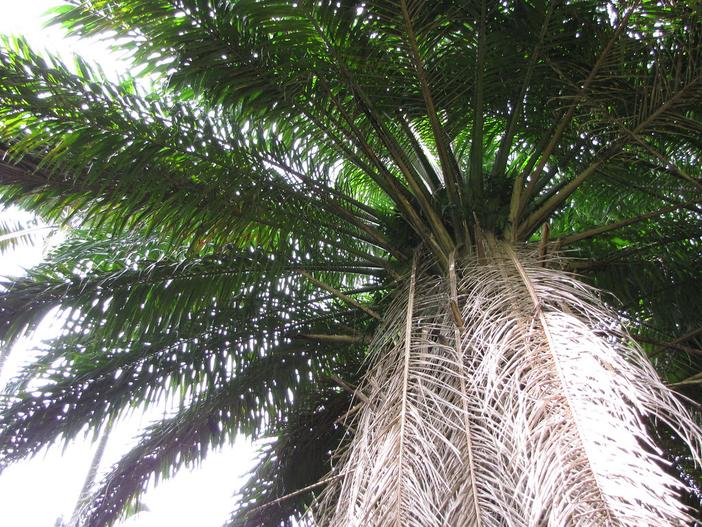African Oil Palm
(Elaeis guineensis)
African Oil Palm (Elaeis guineensis)
/
/

Forest and Kim Starr
CC BY 2.0
































Estimated Native Range
Summary
The African Oil Palm is valued for its high yield of oil-rich fruit, which has numerous culinary and industrial applications. It thrives in hot, humid climates and requires full sun exposure and abundant water to produce optimally. The soil should be well-draining, but the palm is adaptable to a range of soil types. While it is not commonly grown for ornamental purposes, it is extensively cultivated in plantations for its economic value. However, growers should be aware of its potential to become invasive in tropical and subtropical regions outside its native range, such as the Indian Ocean islands, Florida, and Hawaii. It is also susceptible to pests like the rhinoceros beetle and diseases such as Fusarium wilt.CC BY-SA 4.0
Plant Description
- Plant Type: Tree
- Height: 60-80 feet
- Width: 25-45 feet
- Growth Rate: Slow
- Flower Color: N/A
- Flowering Season: Spring, Summer
- Leaf Retention: Evergreen
Growth Requirements
- Sun: Full Sun
- Water: High
- Drainage: Slow, Medium, Fast
Common Uses
Edible*Disclaimer: Easyscape's listed plant edibility is for informational use. Always verify the safety and proper identification of any plant before consumption.
Natural Habitat
Tropical rainforests and occasionally savannahs in West and Central Africa
Other Names
Common Names: Oil Palm, Macaw-Fat, Ölpalme, Afrikanische Ölpalme, Palma Africana, Palmier À Huile, Palmier À Huile D’Afrique, Kelapa Sawit, Palmeira-Do-Azeite, Palmeira-Do-Dendê
Scientific Names: , Elaeis guineensis, Elaeis melanococca, Elaeis dybowskii, Elaeis guineensis subsp. virescens, Elaeis guineensis var. pisifera, Elaeis guineensis f. dura, Elaeis guineensis f. tenera, Elaeis guineensis var. ceredia, Elaeis guineensis subsp. nigrescens
GBIF Accepted Name: Elaeis guineensis Jacq.